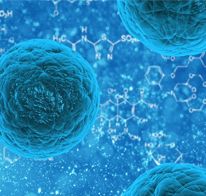Despite a successful surgery, some patients may still feel pain after their back surgery. This is called failed back syndrome or failed back surgery syndrome. The failure is not due to the surgery itself, but the failure to achieve complete resolution of symptoms.
Several factors impact the outcome of spine surgery. Sometimes it is because the area operated on is only one component of the pain or the wrong source of pain. In other cases, the compensatory response of muscles, nerves, and ligament as a result of the initial problem or injury needs more time to adjust and heal. Sometimes scar tissue from the original problem or from the surgery itself is the reason for residual pain. As a result, some people need management for their chronic pain.
Persistent Pain After Surgery

Persistent Pain Following Back Surgery
The decision to undergo surgery to relieve your back pain is an extremely difficult one. Surgery for back problems is usually undertaken because of the severity and duration of the pain, nerve damage or potential damage, and to improve function and mobility. However, not all damage can be fixed, and this is for a variety of reasons. The goal of surgery is to vastly improve symptoms, prevent ongoing destruction, and allow for the most pain-free mobility.
Failed Back Syndrome
What are the reasons for Pain after Therapy or Surgery?
1. Epidural Fibrosis
Scar tissue after back surgery is a necessary part of the healing process and in most cases, causes no pain since there are no nerves in scar tissue. However, the build-up of scar tissue can press on other structures that do have nerves. Scar tissue can also attach one structure to another in an abnormal configuration or put the tissue under tension which can cause pain.
Epidural fibrosis (another fancy word for scar tissue) is the formation of scar tissue near the nerve root that puts pressure on the nerve roots. Symptoms of epidural fibrosis appear about 6 to 12 weeks after their procedure. Any damage to a nerve can train the nerve to fire off signals even when the original problem is fixed. This is referred to as phantom pain and is seen commonly in people with amputated limbs. Burning pain is a gnawing pain that does not change with position, and is one type of nerve pain that may be from scarring.
2. Recurrent Stenosis After Decompression Laminectomy for spinal stenosis can cause the bone to grow back and cause another stenosis that leads to recurrent pain. There can be technical problems from decompression surgery such as a missed fragment of bone, incorrect level of surgery, trauma to the nerve root from splitting of the fibers, or inadequate decompression during the original surgery. In this case, there is no postoperative relief and thus a failed surgery.
Discectomy for spinal stenosis can also lead to ongoing problems. In some cases there can be a reherniation of the damaged disc, causing further nerve compression.
Sometimes removing parts of an unstable spine with discectomy or laminectomy procedures can create greater instability in that area.
3. Failure of a Fusion Fusion is trying to make a broken bone heal as bone cells migrate over the damaged bone to form solid bone. It takes about a year for solid bone to be sturdy. Bony fusion can be inhibited by too much movement, screw or rod placement, and the use of NSAIDs. This can lead to breaks and chronic pain. If the level above or below the fusion breaks down, it is called adjacent segment disease. Inflammation of the membranes that surround the nerves of the spinal cord can cause arachnoiditis and leads to pain. In general, if pain relief is experienced in the three months after surgery, the relief will likely continue. However, in 10-20% of cases, the pain continues until the nerve fully heals. Numbness and tingling take longer than pain to go away. The symptoms of arachnoiditis are numbness, tingling, stinging, and burning in the legs. The pain can be so severe as to restrict the ability to walk.
Diagnosing arachnoiditis is difficult, and CT scans and MRIs can help as well as an EMG which is an electromyogram. EMGs detect electrical impulses which can be abnormal in this condition. There is no cure for arachnoiditis and treatment is multidisciplinary using physiotherapy, exercise, and pain management.
4. Post-Fusion ‘Adjacent Segment Disease’ A successful spinal fusion restores height, alignment, and fixes the vertebra in place to alleviate pain. In some cases, this reduction in mobility can lead to increased stress on adjoining spine levels (usually above) which must overcompensate to offer a similar range of motion. Over time this stress can lead to degeneration and wear-and-tear, requiring surgical intervention at the newly damaged level.
In cases of post-fusion adjacent segment disease, it is possible for patients to receive new-generation implants from our German Spine Specialists, such as Artificial Disc Replacement or Facet Replacement, to restore function and best mitigate any transfer of disease to other spine levels.
Epidural fibrosis (another fancy word for scar tissue) is the formation of scar tissue near the nerve root that puts pressure on the nerve roots. Symptoms of epidural fibrosis appear about 6 to 12 weeks after their procedure. Any damage to a nerve can train the nerve to fire off signals even when the original problem is fixed. This is referred to as phantom pain and is seen commonly in people with amputated limbs. Burning pain is a gnawing pain that does not change with position, and is one type of nerve pain that may be from scarring.
2. Recurrent Stenosis After Decompression Laminectomy for spinal stenosis can cause the bone to grow back and cause another stenosis that leads to recurrent pain. There can be technical problems from decompression surgery such as a missed fragment of bone, incorrect level of surgery, trauma to the nerve root from splitting of the fibers, or inadequate decompression during the original surgery. In this case, there is no postoperative relief and thus a failed surgery.
Discectomy for spinal stenosis can also lead to ongoing problems. In some cases there can be a reherniation of the damaged disc, causing further nerve compression.
Sometimes removing parts of an unstable spine with discectomy or laminectomy procedures can create greater instability in that area.
If these types of smaller keyhole interventions fail and symptoms persist, patients can consider motion-preserving surgeries like Artificial Disc Replacement (ADR), Total Facet Joint Replacement , or Robotically Assisted Spinal Fusion if required.
3. Failure of a Fusion Fusion is trying to make a broken bone heal as bone cells migrate over the damaged bone to form solid bone. It takes about a year for solid bone to be sturdy. Bony fusion can be inhibited by too much movement, screw or rod placement, and the use of NSAIDs. This can lead to breaks and chronic pain. If the level above or below the fusion breaks down, it is called adjacent segment disease. Inflammation of the membranes that surround the nerves of the spinal cord can cause arachnoiditis and leads to pain. In general, if pain relief is experienced in the three months after surgery, the relief will likely continue. However, in 10-20% of cases, the pain continues until the nerve fully heals. Numbness and tingling take longer than pain to go away. The symptoms of arachnoiditis are numbness, tingling, stinging, and burning in the legs. The pain can be so severe as to restrict the ability to walk.
Diagnosing arachnoiditis is difficult, and CT scans and MRIs can help as well as an EMG which is an electromyogram. EMGs detect electrical impulses which can be abnormal in this condition. There is no cure for arachnoiditis and treatment is multidisciplinary using physiotherapy, exercise, and pain management.
4. Post-Fusion ‘Adjacent Segment Disease’ A successful spinal fusion restores height, alignment, and fixes the vertebra in place to alleviate pain. In some cases, this reduction in mobility can lead to increased stress on adjoining spine levels (usually above) which must overcompensate to offer a similar range of motion. Over time this stress can lead to degeneration and wear-and-tear, requiring surgical intervention at the newly damaged level.
In cases of post-fusion adjacent segment disease, it is possible for patients to receive new-generation implants from our German Spine Specialists, such as Artificial Disc Replacement or Facet Replacement, to restore function and best mitigate any transfer of disease to other spine levels.
Surgery & Treatment for Persistent Pain After Surgery
At Spine Connection we have regenerative and surgical treatments for all spine conditions. As every case is unique we encourage you to receive and compare opinions from our Neurosurgeon and Orthopedic Spine Specialists. We are here to help.
Begin My Assessment
Ask Our Doctors
Join Our Youtube Channel
Watch videos showcasing the latest technologies and surgery techniques, and keep up to date with patient stories from around the globe.








